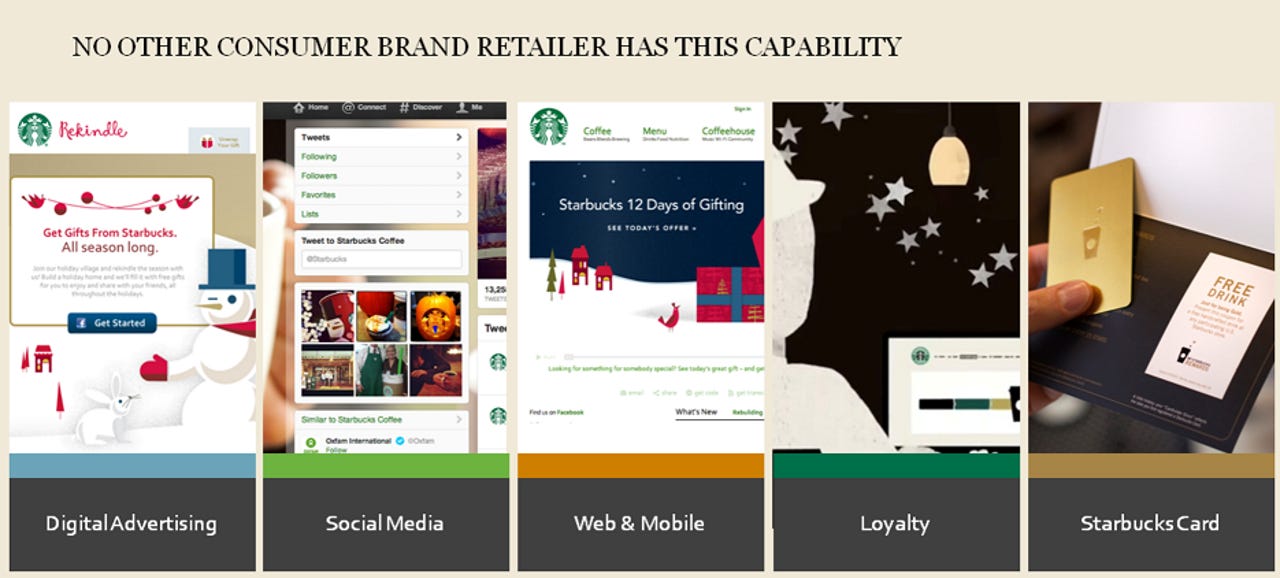Starbucks: How social, mobile deliver return on investment

Starbucks outlined a few nuances to its digital strategy, which revolves around social networking, mobile payments and loyalty programs, and the returns on investment.
In a nutshell, Starbucks biggest returns from its digital strategy boils down to lower marketing costs and perks such as more sales velocity as customers use mobile payments and get through lines quicker.
Adam Brotman, Starbucks' chief digital officer, outlined a bevy of impressive statistics on the company's annual investor meeting on Wednesday. Overall, Starbucks' array of digital assets is seen as a primary growth avenue. Aside from digital programs, Starbucks is also investing to double its international footprint by 2014, become a larger player in China and grow its tea unit.

Among Brotman's key points:
- Starbucks generates more than 7.6 billion paid impressions as it grows its ad business.
- The company is a top 10 brand on Twitter with 3 million followers. It has 900,000 followers on Instagram. Brotman calls these efforts "brand storytelling."
- Starbucks has 51 million monthly visits across its mobile and Web platforms.
- There are 5 million Starbucks rewards customers and "we're just getting started," said Brotman.
- 5.5 million email opt-ins allow for direct communication with customers and cuts down on coupon printing costs.
- 25 percent of store transactions are prepaid.
- E-cards via Living Social and Google Offers produce quick sales bursts. Starbucks sold 600,000 e-cards on Google Offers.
- Starbucks does 2.1 million mobile payment transactions per week. Brotman considers mobile to be the glue of the entire digital. "With mobile it all comes together and allows us to turbo charge everything across digital," he said.
As for the returns on investment, Brotman noted that the Web, mobile and social efforts combine to "give us lower cost of marketing per customer," said Brotman. "We can spend and rely far less on traditional and paid marketing," he added.
Meanwhile, the loyalty card programs give Starbucks a lot of data and insights for analytics.
And on the mobile front, Starbucks gets a few interesting returns.
First, mobile payments move lines faster and increase sales velocity.
A deal with Square also turns out to be a cheaper way to process debit and credit cards over Starbucks' current processor. "Square gives us savings on credit and debit card processing and it's a real number," said Brotman.